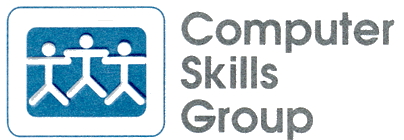

As you add application programs to your computer, the "Programs" menu becomes more cluttered. Each new program adds a line to the Programs Menu. Soon you have a multi-page menu in which finding things can be a chore. If your menus "scroll", it's even more annoying. A better approach is to reduce the overall size of the Programs Menu and then alphabetize the menus. This tip tells you how to do that.
The write-up takes longer to type out than to do. Once you try this and see how it works, you should be able to clean up a typical menu in just a couple of minutes. The benefit will last a long time.
As always, just read the paragraphs you are unfamiliar with, and skip the others.
The required skills -
There are three things you need to know how to do.
Once you know how to do that, you can have complete control of your Programs menu, and other types of menus as well.
The example -
Let's use Microsoft Office as a common example of how this is done.
If you add Microsoft Office to your computer, it creates a separate line for each of its family of programs.
You end up lengthening the Programs menu by at least five lines, one each for Word, Powerpoint, Excel, Outlook and Office.
Not only that, each program name begins with the word "Microsoft", making alphabetizing difficult.
To save space and make it easier to find individual programs, why not make a folder called "Microsoft", change the programs names to a single word (Word, Excel, Outlook, etc.), and file them alphabetically in that folder? Those five items now only take up one line on the Programs Menu and, if you do want to find a Microsoft program, it is very easy to locate the specific one you want. That's the concept, so let's see how we do it.
Create a new folder on the Programs Menu -
Windows gives us a special way to find the Programs Menu folder.
That's it. You now have a folder called "Microsoft" on your Programs Menu. So far, it's empty, but read on.
Rename your programs with alphabetization in mind -
The final step will be to move the Office programs into our new "Microsoft" folder, but first, let's rename them.
The idea is to remove the redundant word "Microsoft" from each program's name, taking up less width on the menu and allowing us to file "Word" under "W", "Powerpoint" under "P", etc.
To do this, all we do is open the Programs menu (Start, Programs) and RIGHT-click on the program name we want to change.
Select "Rename" and either delete the Microsoft part or just re-type the name we want.
When you hit Enter, you're done.
Rename each of the Office programs to single words and you're ready to move to the final step.
Re-order menu items -
Here's the payoff - the final step.
Any program name can be moved by simply pointing to it and dragging it to wherever you want it to be.
(To "drag" and item in Windows, you click on the item, holding the mouse button depressed, move the cursor to the new location, and release the mouse button.
This is a "look-and-feel of Windows" skill, known as "drag and drop".)
Folders you find on the menu can be moved in the same way.
You have complete control over where to place these items and what the items are called.
As you drag, you will notice that a bold black bar appears to move with the item.
That bar shows you where the item will end up if you release the mouse button at that instant.
Just move it around until you get the black bar where you want it to be, and release.
Sometime you will want to move a program from an existing folder to either the main menu or another existing folder. It's done the same way. Click on the item and drag it back to the main menu. Now, continue dragging to the new location. If the new location is another folder, just rest the black bar above the folder name for a moment (don't release yet). The new folder's contents menu will open. Now, continue dragging over onto the folder contents and position the black bar where you want it. It's the same exact drag-and-drop, just over a longer route!
And Here's a Bonus Tip -
Remember a previous tip where I wrote about the upper half of the Start Menu?
All of what you learned here works exactly the same on the Start Menu as it does on the Programs Menu!
The sharp readers probably noticed that when they went looking for the "Programs" folder, the "Start Menu" folder was just above it.
You can create folders directly on the Start Menu and then load your favorite programs there as well.
I put all my day-to-day programs directly on the upper Start Menu so I don't have to close or minimize any programs to get to a desktop icon. Desktop icons may look techie, but they are often covered over when you need them. The start button is always accessible!